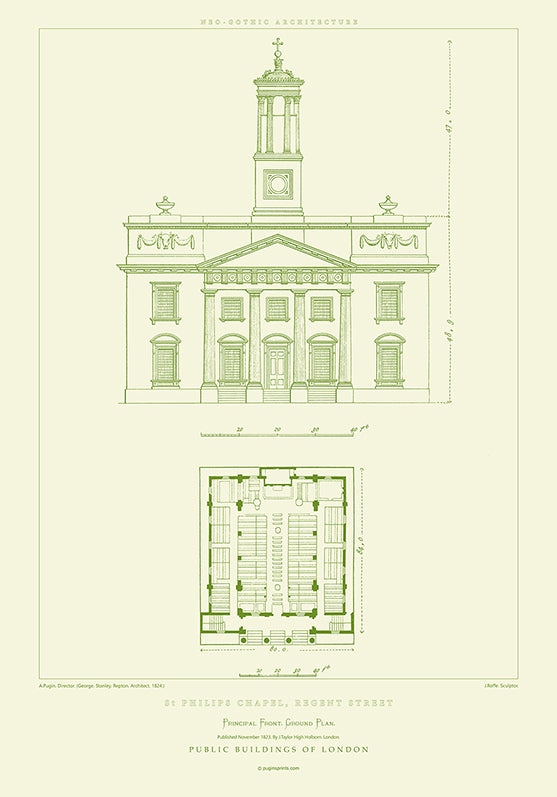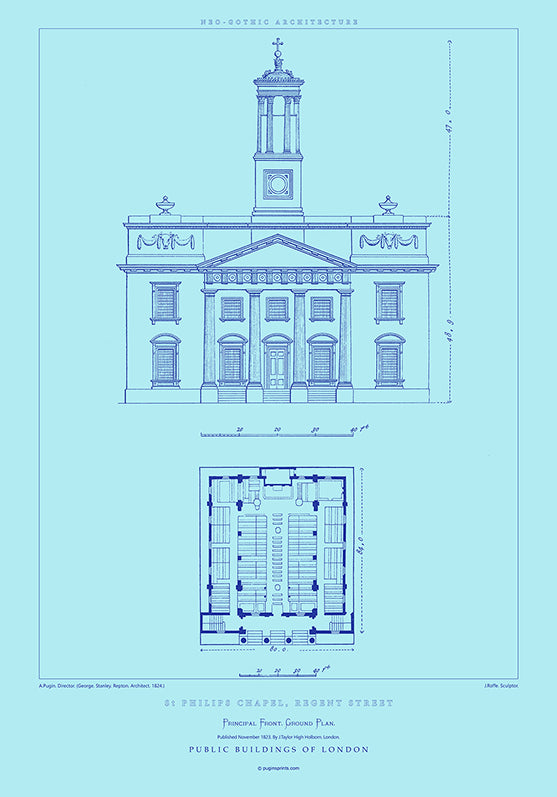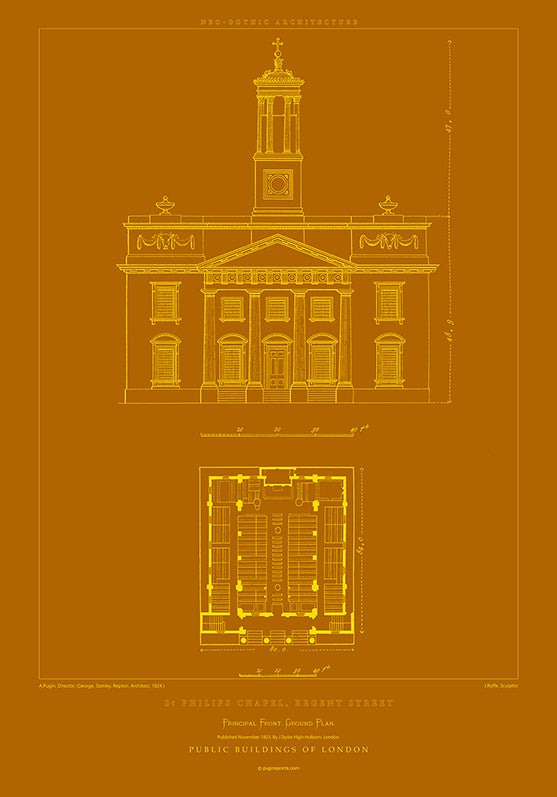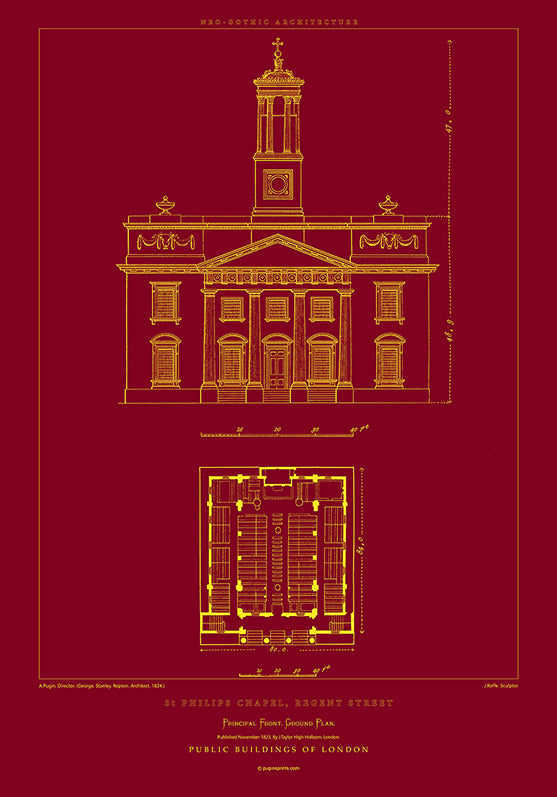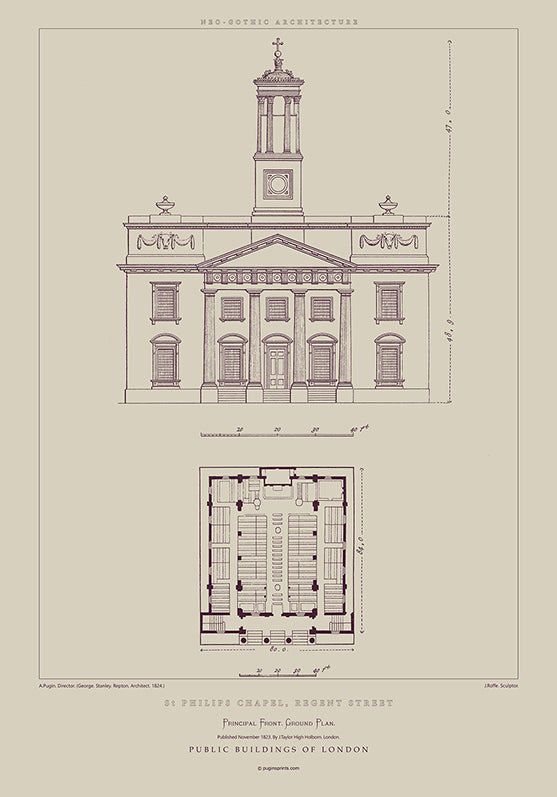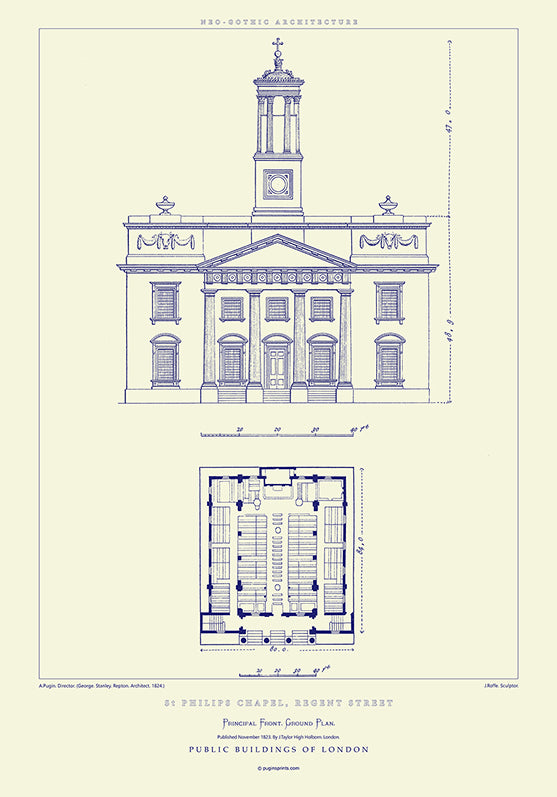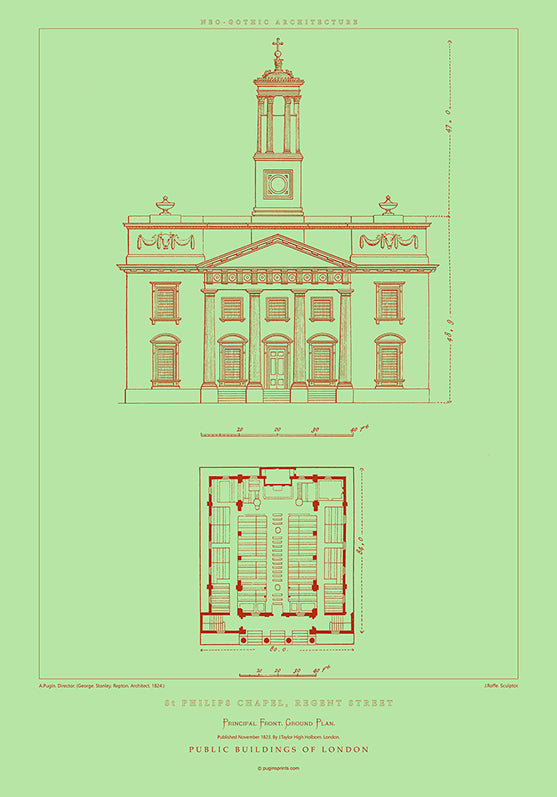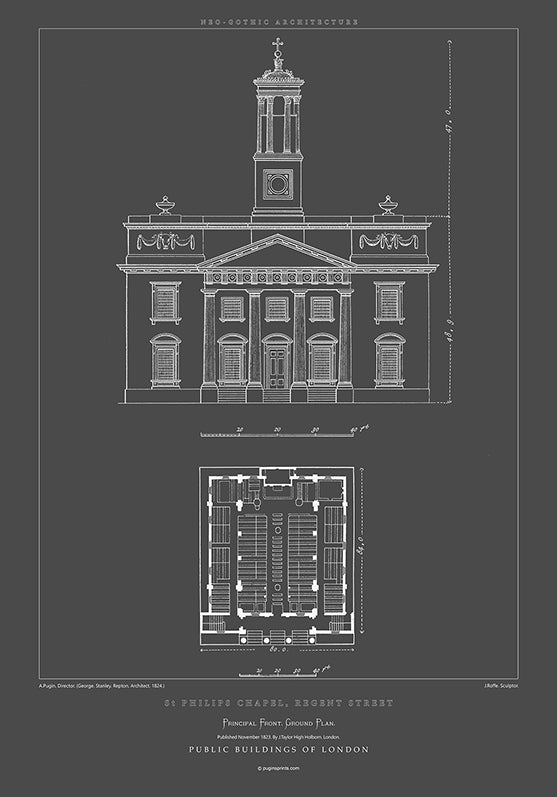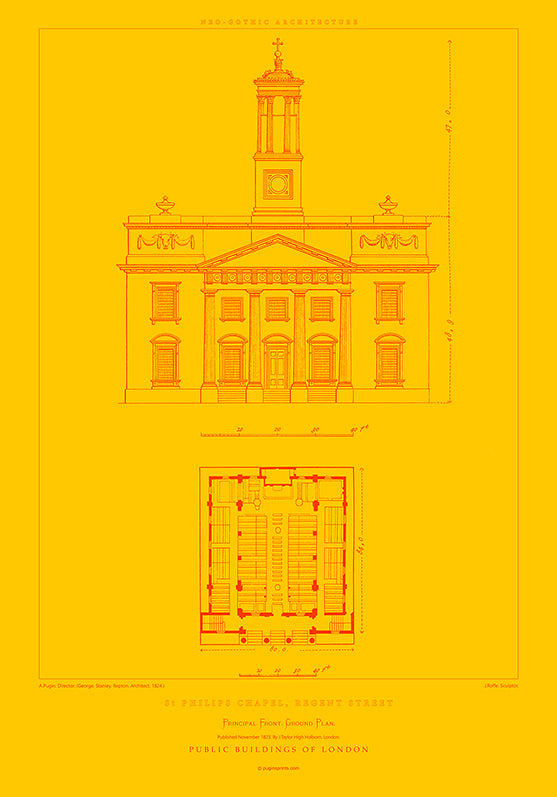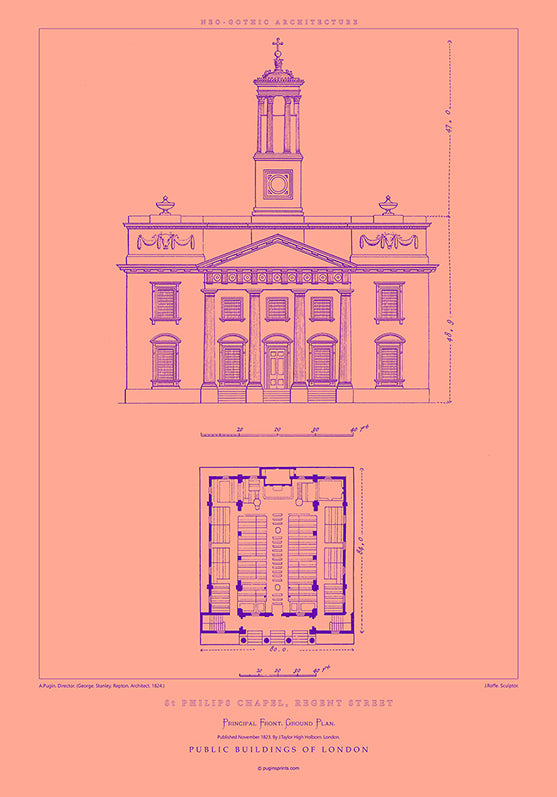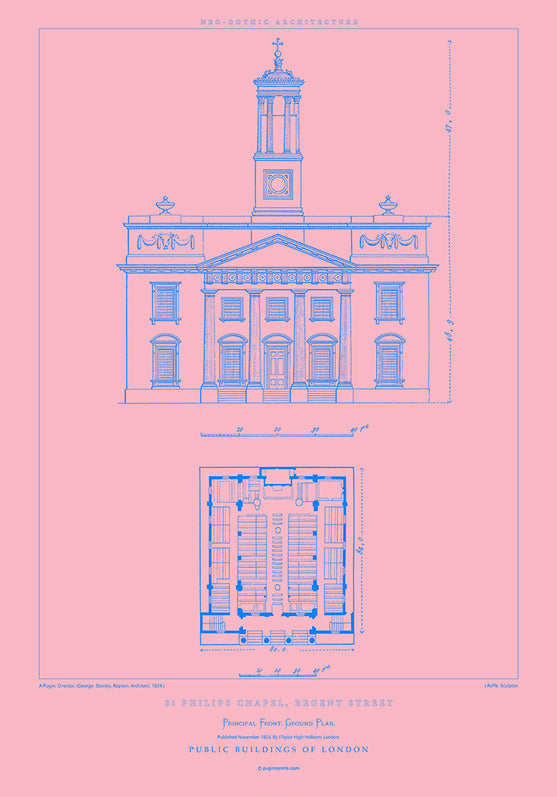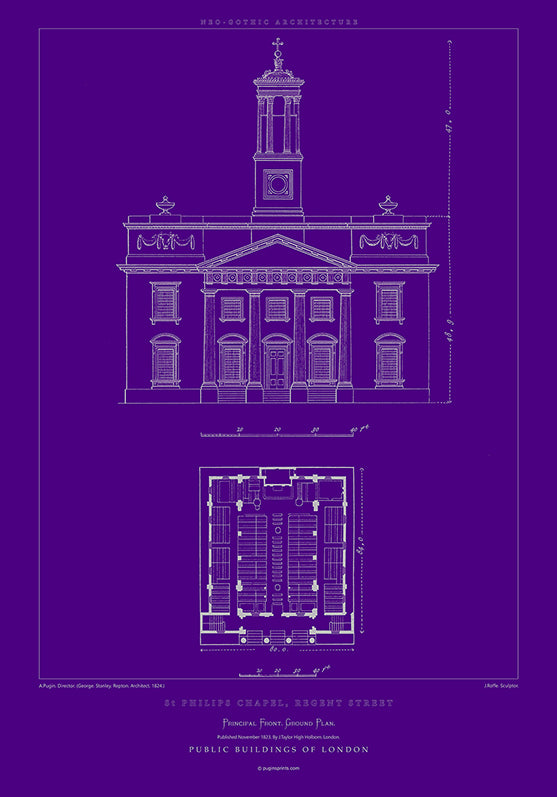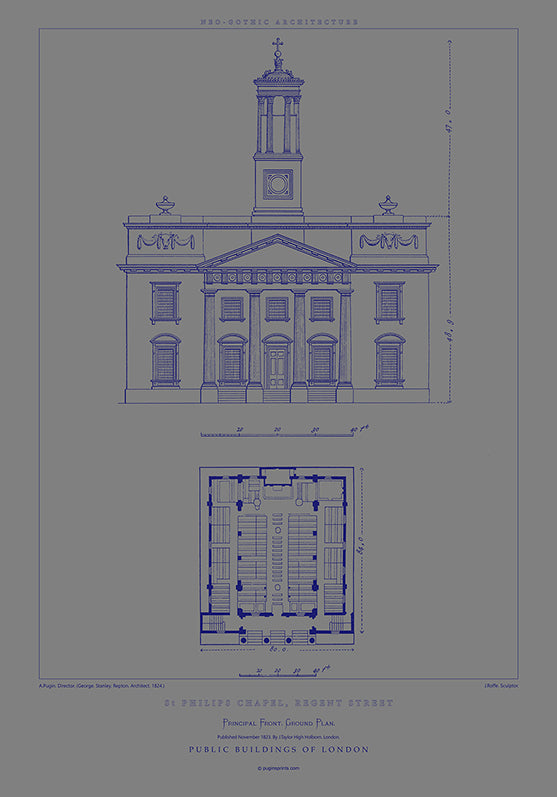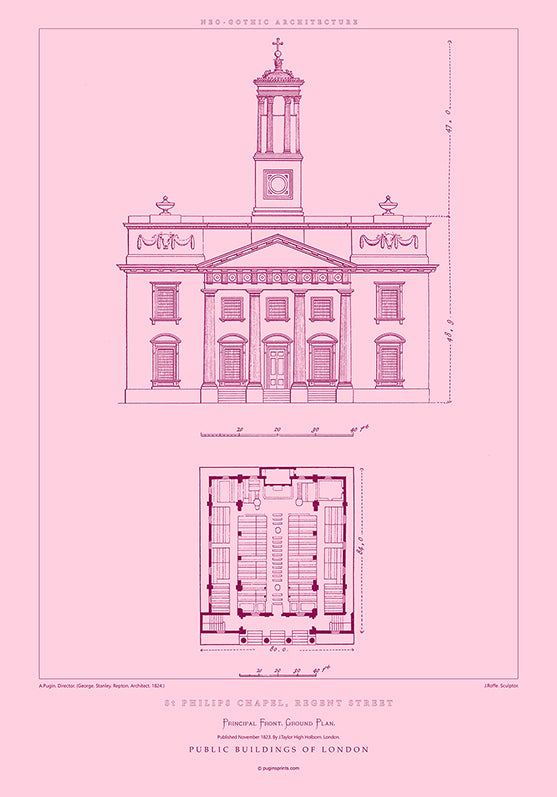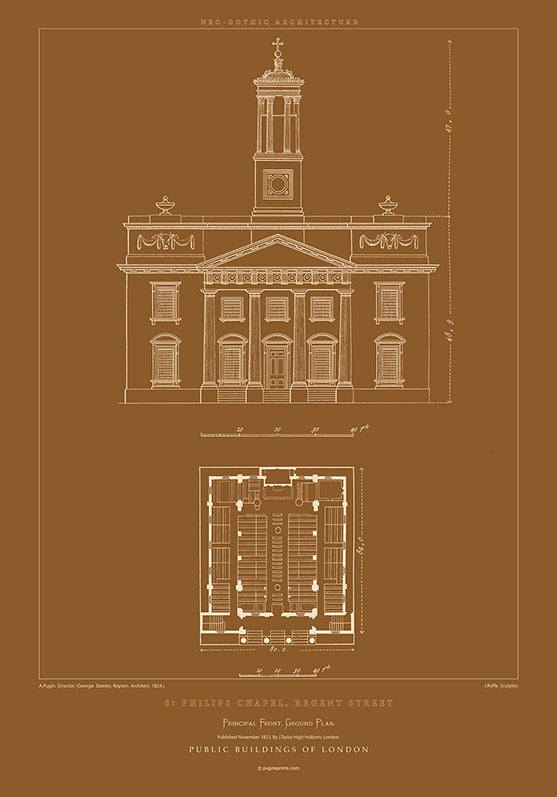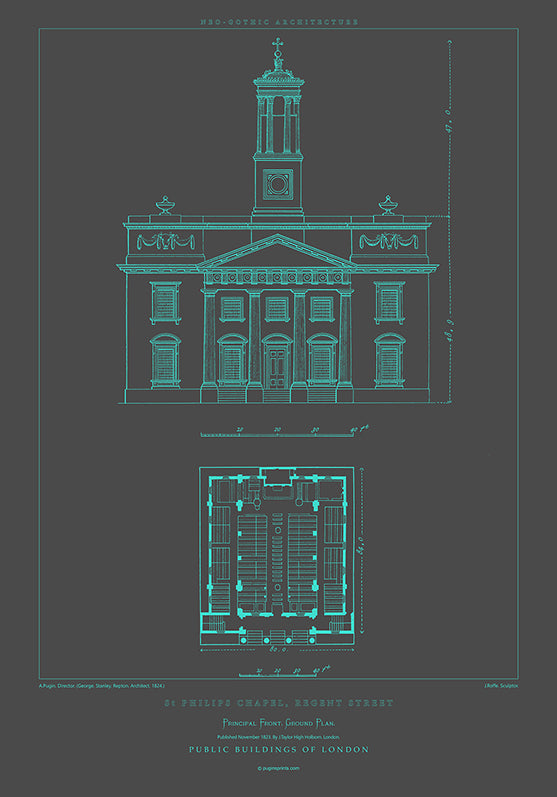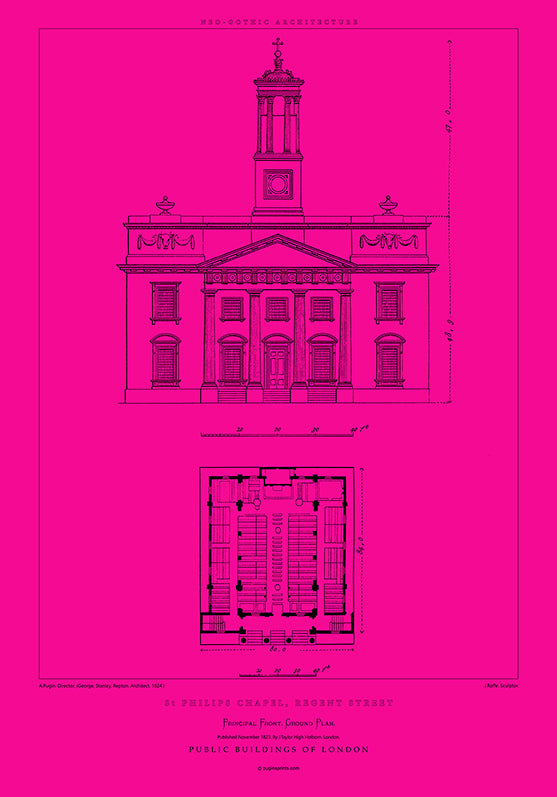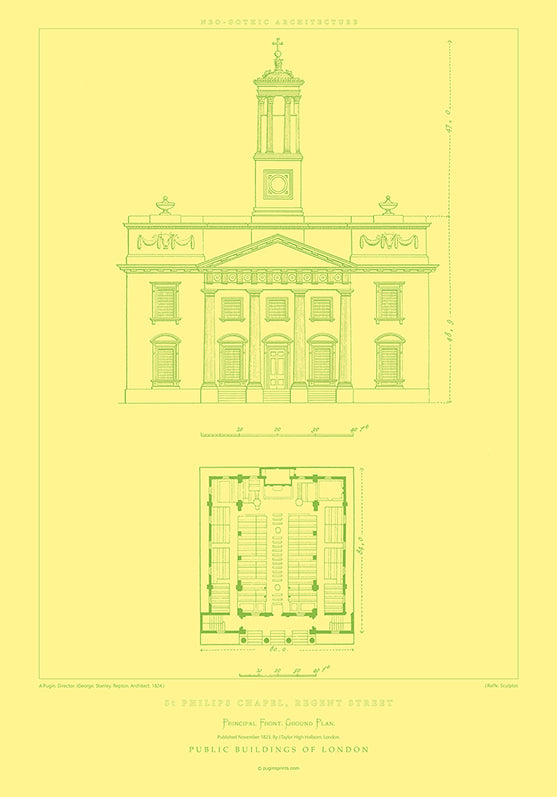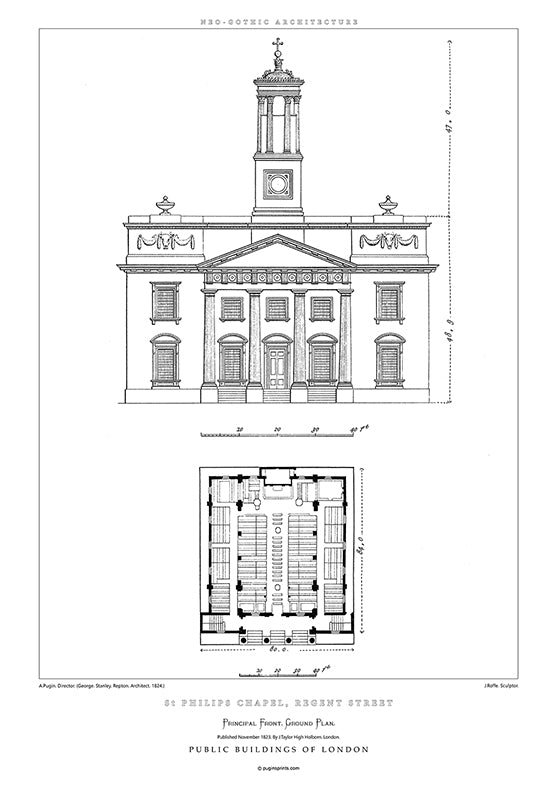Collection: St Philips Chapel
St Philip’s Chapel on Regent Street is a fascinating footnote in London’s architectural and ecclesiastical history—one that’s often overshadowed by its more famous neighbour, All Souls Langham Place. Here are some intriguing facts that might pique your interest:
Historical Snapshot
- Date of Construction: St Philip’s Chapel was built in 1828, during a period of intense urban and architectural development in London. It was part of the broader transformation of Regent Street into a ceremonial and commercial axis.
- Architectural Style: While specific stylistic details are scarce, the chapel was consistent with the restrained neoclassical and Regency aesthetics of the time, aligning with the urban vision of John Nash’s Regent Street plan.
Location & Legacy
- Regent Street’s Ecclesiastical Layer: The chapel was one of several religious buildings that dotted the newly developed Regent Street, though it didn’t survive into the modern era. Today, All Souls Langham Place is the only Nash-designed church still standing.
- Civic and Cultural Role: St Philip’s Chapel served a growing urban population during a time when London’s West End was rapidly evolving into a hub of commerce, entertainment, and social stratification.
Archival Presence
- A wood engraving of the chapel was published in The Mirror of Literature, Amusement and Instruction, a popular 19th-century periodical. This image is preserved in the London Picture Archive, offering a rare visual glimpse of the building’s façade and proportions.
Symbolic Context
- The chapel’s presence on Regent Street, an avenue designed to connect the Prince Regent’s residences, speaks to the blending of ceremonial, civic, and spiritual functions in early 19th-century urban planning. It was part of a broader effort to civilize and elevate the West End’s social character.
1 product
-
St philips chapel
From £50.00From £50.00/

